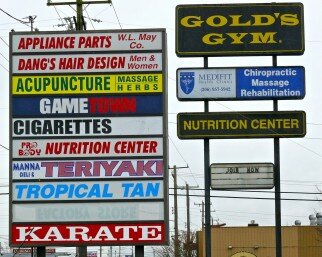 Aurora Avenue is the most maligned road in Seattle. For a simple street, it takes an enormous amount of public criticism, belittling, and outright outrage from nearly all comers. Adjectives like “seedy” and “grimy” are thrown around with abandon. Even Bremerton Mayor Cary Bozeman suggested Seattle should plant trees to “block off the visual garbage” of Aurora (apparently, he forgot he was the mayor of Bremerton–mayor heal thyself).
Aurora Avenue is the most maligned road in Seattle. For a simple street, it takes an enormous amount of public criticism, belittling, and outright outrage from nearly all comers. Adjectives like “seedy” and “grimy” are thrown around with abandon. Even Bremerton Mayor Cary Bozeman suggested Seattle should plant trees to “block off the visual garbage” of Aurora (apparently, he forgot he was the mayor of Bremerton–mayor heal thyself).
I suspect that Aurora, or HWY 99, is criticized by people that rarely go there. And that’s a shame, because for many of us, for many reasons, Aurora is an important part of life in this city, an essential corridor that, frankly, looks and feels the way it does because that’s the way it ought to look and feel.
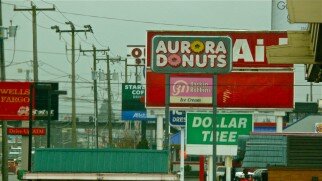 If you really want to understand Aurora, you need to get out and drive on it, casually. Since Aurora is a major commuting thoroughfare, it’s easy to drive past the various buildings and businesses and just flat out ignore them. So consider going there not on an errand or a commute, but as an interested spectator. Only then will you see this street as the important part of the city it is.
If you really want to understand Aurora, you need to get out and drive on it, casually. Since Aurora is a major commuting thoroughfare, it’s easy to drive past the various buildings and businesses and just flat out ignore them. So consider going there not on an errand or a commute, but as an interested spectator. Only then will you see this street as the important part of the city it is.
Start north at 145th, the city’s northern limits, and head south. Right away, you can see why Aurora takes the verbal blows over and over. There is very little visual beauty in the architecture. Mostly you see small businesses that are in buildings that have been built in different eras, for different reasons. There is little architectural charm from 145th to 137th, but there should be familiarity. Most of America’s highways look just like this with light industry and strip malls.
Most of the industries and businesses on Aurora are niche endeavors that probably have low margins. These kinds of businesses can’t afford the major rent prices in other parts of Seattle. Businesses like the Sports Card Exchange, Aurora Plumbing and Electric Supply, and a muffler shop. Aurora is where they can afford to be and if you want, or need, their services, wouldn’t you rather go there than drive to Lynnwood or Woodinville or Bothell?
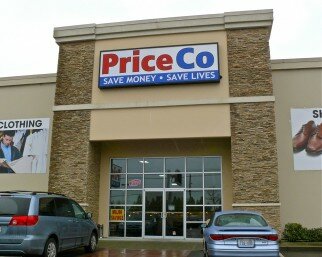 Just south past 137th, you are in the ‘big box’ section of HWY 99. Big box retail needs a lot of space, and in Seattle space is limited. So from 137th to 105th you have Lowes, Home Depot, Sam’s Club, Kmart, and Grocery Outlet. You also have stores like the St. Vincent DePaul Thrift Store and PriceCo, a store that sells furniture, appliances and items made by at-risk youths as part of their treatment and rehab. Sales at the store support Welcome Home, a long-term recovery residence where troubled men and women get help to renter society. Next-door, there is the Dollar Store.
Just south past 137th, you are in the ‘big box’ section of HWY 99. Big box retail needs a lot of space, and in Seattle space is limited. So from 137th to 105th you have Lowes, Home Depot, Sam’s Club, Kmart, and Grocery Outlet. You also have stores like the St. Vincent DePaul Thrift Store and PriceCo, a store that sells furniture, appliances and items made by at-risk youths as part of their treatment and rehab. Sales at the store support Welcome Home, a long-term recovery residence where troubled men and women get help to renter society. Next-door, there is the Dollar Store.
Put all these stores together and you quickly see that Aurora is a great place to save a buck.
Dotted along the way are multiple auto parts stores, auto body shops and auto repair businesses. Auto maintenance is part of the daily life cycle of a city. It’s critical that our vehicles be repaired. However, as our city grows, as housing needs expand, these businesses are being pushed out of our Seattle. Many similar businesses used to dot South Lake Union, but as that neighborhood gentrifies, rents increase and small businesses move out. Aurora, and parts of Lake City Way, are the last stand for such businesses in North Seattle. And do you really want to drive, or have your car towed, to Shoreline when it needs repair?
Aurora is also a great place to get a donut. Aurora Donut and Krispy Kreme are here between 135th and 125th.
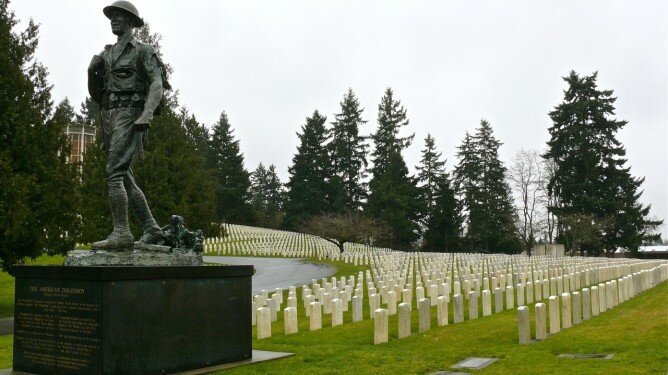 Or, you could decide to spend eternity on Aurora. Just south of 120th, Evergreen Washelli straddles HWY 99 and provides a lovely green patch in the urban cityscape. A slow drive through here is always advised, in particular to view the lovely veteran’s cemetery at the far south border of the property on the western side of 99. Here, a lovely sculpture of a World War I soldier, entitled The Doughboy, stands sentinel over rows of simple white tombstones that honor our veterans. Created by sculptor Alonzo Victor Lewis in 1921, it was originally in front of the old Veteran’s Hall on the Seattle Center campus but was moved in 1998 when McCaw Hall was built. This statue alone is worth a stop at the cemetery.
Or, you could decide to spend eternity on Aurora. Just south of 120th, Evergreen Washelli straddles HWY 99 and provides a lovely green patch in the urban cityscape. A slow drive through here is always advised, in particular to view the lovely veteran’s cemetery at the far south border of the property on the western side of 99. Here, a lovely sculpture of a World War I soldier, entitled The Doughboy, stands sentinel over rows of simple white tombstones that honor our veterans. Created by sculptor Alonzo Victor Lewis in 1921, it was originally in front of the old Veteran’s Hall on the Seattle Center campus but was moved in 1998 when McCaw Hall was built. This statue alone is worth a stop at the cemetery.
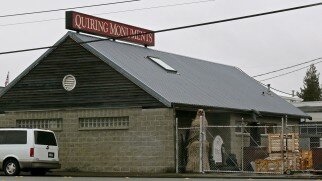 Coming out of the southern end of Evergreen Washelli, you are faced with the section of Aurora that probably draws the most slings and arrows of disdain. Here you can see more auto shops and more light industry. But there are also institutions like Cyndy’s House of Pancakes, which has been rumored to be closing but is still serving the hot cakes. And Quiring Monuments is a few blocks on. We don’t often think about the need for purchasing a headstone, but, believe me, when you have lost a loved one, it’s a service that you must have and the people there are gifted and kind and damn it, it’s a service we simply must have.
Coming out of the southern end of Evergreen Washelli, you are faced with the section of Aurora that probably draws the most slings and arrows of disdain. Here you can see more auto shops and more light industry. But there are also institutions like Cyndy’s House of Pancakes, which has been rumored to be closing but is still serving the hot cakes. And Quiring Monuments is a few blocks on. We don’t often think about the need for purchasing a headstone, but, believe me, when you have lost a loved one, it’s a service that you must have and the people there are gifted and kind and damn it, it’s a service we simply must have.
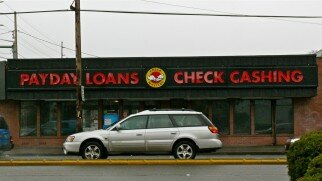 On the southeast corner of 105th sits a now-vacant building that touches on the financial importance and impact of this mother road. Built in the late 1970s, this simple square building is a barometer of our times. In the 1970s they sold waterbeds here, in the 1980s they sold futons, in the 1990s and 2000s it was a check-cashing establishment. What it becomes next will say a lot about who we are in 2011.
On the southeast corner of 105th sits a now-vacant building that touches on the financial importance and impact of this mother road. Built in the late 1970s, this simple square building is a barometer of our times. In the 1970s they sold waterbeds here, in the 1980s they sold futons, in the 1990s and 2000s it was a check-cashing establishment. What it becomes next will say a lot about who we are in 2011.
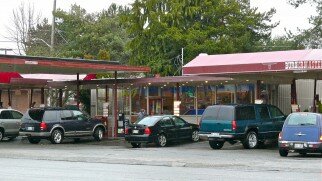 A little farther South, you can still eat a burger and fries on a tray hooked to your car window at the Burgermaster. It’s the last of a dying breed (there used to be a second Burgermaster farther south just past Woodland Park that is, alas, long gone).
A little farther South, you can still eat a burger and fries on a tray hooked to your car window at the Burgermaster. It’s the last of a dying breed (there used to be a second Burgermaster farther south just past Woodland Park that is, alas, long gone).
Across the street is a business that you only know about when you need it, and then you thank heaven it’s there. W.L. May Company is an appliance parts store. All those fancy, stainless appliances we all have or want, break down now and then. And this store, this one store, is where every appliance store in town sends you for parts. If this store front didn’t exist here, you’d have to drive to Southcenter or Lynnwood if your dishwasher needed a particular hose, tray or drain.
And this more than anything is what I love about Aurora. It’s places like this that have those low profit margins, but add so much to the value of living in Seattle. There are hundreds of businesses like this on Aurora. You have been to one of them, one of them has been valuable to you. There’s nothing seedy about needing a futon or an appliance part or a shirt from a thrift store.
Driving on, you pass the most beautiful part of the Aurora experience: Green Lake and Woodland Park. Like Evergreen Washelli, this is a lovely green and open space in the heart of our city. Look fast to the east at the north end of Woodland Park and you’ll see bocce ball courts built by the WPA in the 1930s. A few years ago, Veer Lofts, a swank new condo building in SLU, touted its bocce ball court as a exciting, new rush for the hipsters. Sorry Veer Lofts marketing and PR teams, they’ve been tossing bocce balls at Woodland Park for 80 years. They were hip when SLU looked, well, like most of Aurora.
Now on the journey you run into the most common business on Aurora, and the one that is most troublesome.
From the 1920s to the 1960s, as Seattle’s car culture grew, HWY 99 was the main road in and out of the city. As such, it became a service center for travelers. Aurora is packed with motels, more, in fact, than any other part of Seattle.
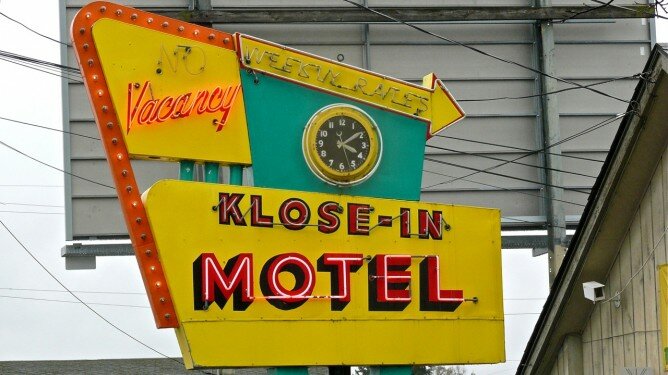 There are three generations of motels on Aurora. The earliest date from the 1930s, when people first started venturing out on long road trips on mother roads like Route 66. The Klose-In Motel, with its distinctive green and yellow sign, is an excellent example of the first generation of motels.
There are three generations of motels on Aurora. The earliest date from the 1930s, when people first started venturing out on long road trips on mother roads like Route 66. The Klose-In Motel, with its distinctive green and yellow sign, is an excellent example of the first generation of motels.
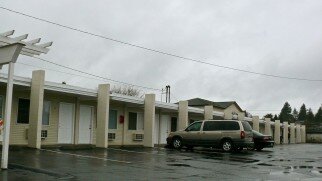 The next generation of motels you see, and by far the most prevalent, are motels from the 1960s. Seattle’s World’s Fair brought crowds and prosperity to Seattle. Tourism increased. The ascendancy of Boeing and Nordstrom meant salesmen and new employees coming to town. All these groups needed easy,affordable and temporary housing.
The next generation of motels you see, and by far the most prevalent, are motels from the 1960s. Seattle’s World’s Fair brought crowds and prosperity to Seattle. Tourism increased. The ascendancy of Boeing and Nordstrom meant salesmen and new employees coming to town. All these groups needed easy,affordable and temporary housing.
As Seattle continued to grow, modern motels like Travel Lodge and Holiday Inn Express have moved in.
But the growth of this business brings us to the one, undeniably seedy part of life on Aurora: prostitution.
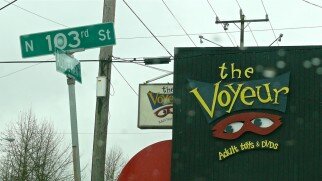 No article on Aurora can ignore this corridor’s relationship to the sex trade. The availability of so many inexpensive motel rooms encouraged their use on an hourly basis. Motel owners turned their heads, pocketed the money and the cycle has gone on for years.
No article on Aurora can ignore this corridor’s relationship to the sex trade. The availability of so many inexpensive motel rooms encouraged their use on an hourly basis. Motel owners turned their heads, pocketed the money and the cycle has gone on for years.
Those inexpensive motel rooms also are serving another purpose. About half the motels on Aurora are now serving as low-cost housing, where residents pay weekly. As the city council debates homeless camps, the more insidious problem is the lack of affordable housing for minimum wage or hourly workers. Again, Aurora is serving a vital need in this community, but in this case a sad one.
Both of these two issues are coming to an ugly head and fast. Aurora, particularly from 85th street down to the George Washington Memorial Bridge (a.k.a Aurora Bridge), is gentrifying. Already, new construction condos are crowding in all the way up to 145th at the north to the bridge, but it’s mostly happening closer to the bridge.
Motels like the old Aloha and Thunderbird are closed and boarded up and covered in graffiti. The Thunderbird, at least, still has its magnificent sign. Their demolition was no doubt delayed by the recession, but more condos will soon crowd this stretch of the highway to the point where you will be driving through canyons of glass.
And that may not be such a bad thing. Seattle is growing; people need places to live. Urban density (oh, how 2007 that phrase is) demands that low-lying small businesses must give way to high-rise mixed-use buildings. Businesses are forced out by the rapidly rising value of the land. A huge condo building is worth more money than, well, let’s say Green Lake Games at 7509 Aurora where they sell, believe it or not, board games and role-playing games.
So the question is, what matters more to the diversity of life in this city? On one side you have a board game retail store, appliance parts stores, a muffler shop and hundreds of other businesses. On the other hand, you have mixed-use high-rise development. And the change from one to the other is happening fast, recession or not. Lake City Way past 80th, Aurora, parts of 35th Avenue NE is about all that’s left for small, light industry businesses north of the cut.
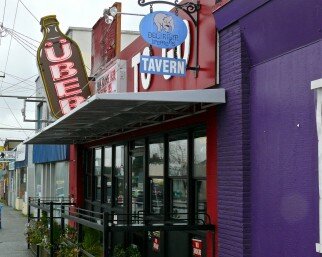 To me, Aurora isn’t a seedy dive, it’s a vital part of life in this city. It’s Über Tavern, a lawmower store, bike shops, pawn-shops, a family business that makes headstones. These are things that we all need to have at one time or another, and we are better for having them here, in the city, rather than someplace far away.
To me, Aurora isn’t a seedy dive, it’s a vital part of life in this city. It’s Über Tavern, a lawmower store, bike shops, pawn-shops, a family business that makes headstones. These are things that we all need to have at one time or another, and we are better for having them here, in the city, rather than someplace far away.
For now, I’m all about that burger, fries, and a shake served on a tray slung over my driver seat window. I love life on Seattle’s Mother Road.
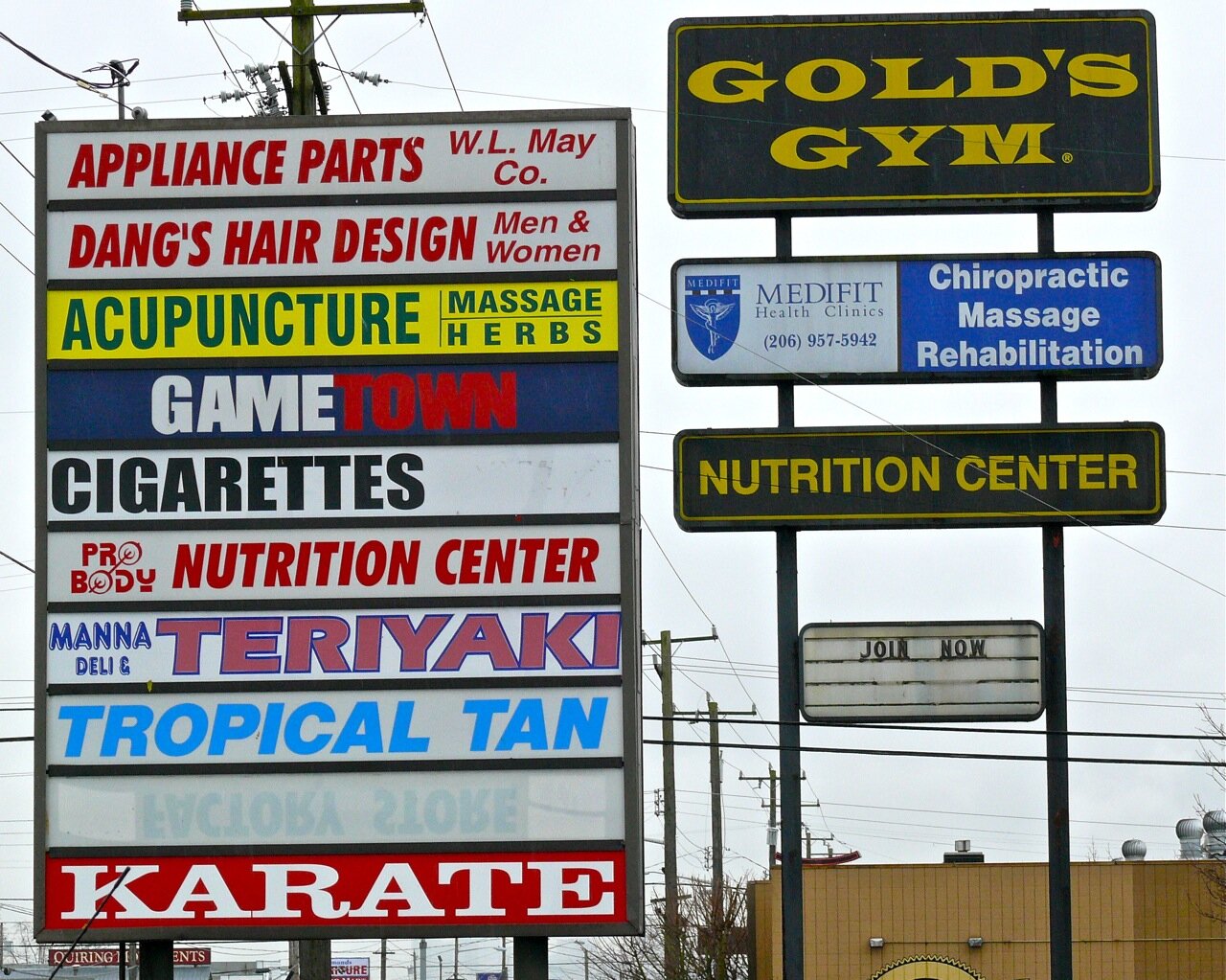
i disagree. the author of this may have alot of fun driving and shopping on aurora during the day, but remove the car, remove the money in your wallet, make it dark outside and put back all the drunks, gang-bangers (police included), schizophrenic hobos and sleazy heroin dealers and it might not seem like such a picnic. i don’t see how the fact that there are businesses with low profit margins makes it a fun place to hang out. how often do you go to furniture stores for fun? ok, great, so you can save a buck (if you have one), and the cemetery is a peaceful place, if you like that sort of thing… oh and just because your burger is hanging on a tray on your car window doesn’t make it good food. the point here seems to be that aurora is cheap… exactly, that’s why people shop there, but try living there.
Astrophoria, thanks for reading the article. There is truth to what you say about Aurora at night, unfortunately, you could say the exact same about downtown, the U district, South Lake Union, Belltown, Broadway and so many other neighborhoods. Dealing with nightcrawlers is also, unfortunately, part of city life. As to hanging out, there are wonderful places on Aurora to hang out, and others far less so, still others no way. Again, many city neighborhoods are the same. What Aurora is to me, and what the article says is that Aurora is something vital to this community and what it represents at its best, men and woman working small businesses that matter, is quickly vanishing due to rising land values and when it’s gone, warts and all, it will make life here less livable. So, can the city find a way to police the nightlife and preserve the good? I bet people in Belltown, another great neighborhood hardened by nightcrawler violence, are asking the same. And I paid $12.99 for a Burger at a posh SLU burger joint yesterday and it was a salty, greasy mess that turned my stomach. I’ll take a delicious Burgermaster any day at a third the price. To each his or her own.
The economy goes down, these less well-off areas will go down with it. Every city has an Aurora Avenue. Anyone who’s lived long enough or has been aware long enough realizes that certain places are inhabited by certain types of folks. That doesn’t make them less human, it just is what it is. A drug addict can travel from here to Pittsburg and end up on a street just like Aurora Avenue in that city. Why? Because it is a segment of the population that creates these pockets, it is not the street, it’s every-town usa. Some bad habits go well hidden in wealth and some are out there to see. This will become more obvious as these areas sink lower as the economic tide goes out.
Wait – did you just say “great place to get a donut” and “Krispy Kreme” in the same breath? God no, I’d rather let a buffalo with leprosy take a dump into my mouth than eat a Krispy Kreme. Surely there must be a top pot on Aurora or something!